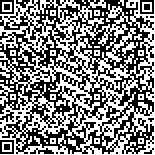高家欢,胡昔权,尹明宇,冼庆林,张淑娴,黄丽.动觉运动想象和视觉运动想象对脑卒中患者上肢功能恢复及日常生活活动能力的影响[J].中华物理医学与康复杂志,2017,39(11):815-818
扫码阅读全文

|
| 动觉运动想象和视觉运动想象对脑卒中患者上肢功能恢复及日常生活活动能力的影响 |
| Kinesthetic and visual imagery training are equally effective in upper extremity rehabilitation and improving ability in the activities of daily living after a stroke |
| |
| DOI: |
| 中文关键词: 脑卒中 动觉想象 视觉想象 上肢 康复 |
| 英文关键词: Stroke Kinesthetic imagery Visual imagery Upper limbs |
| 基金项目: |
|
| 摘要点击次数: 6796 |
| 全文下载次数: 7875 |
| 中文摘要: |
| 目的 观察动觉运动想象和视觉运动想象对脑卒中偏瘫患者上肢功能恢复及日常生活活动能力的影响。 方法 采用随机数字表法将45例脑卒中偏瘫患者分为动觉想象组(14例)、视觉想象组(15例)及对照组(16例)。3组患者均给予常规康复干预,动觉想象组患者在此基础上接受每天1次,每次30min,持续4周的动觉运动想象训练,视觉想象组则接受相同时间的视觉运动想象训练,对照组接受相同时间的放松训练/病情教育。于治疗前、治疗4周后分别采用Fugl-Meyer运动功能量表上肢部分(FMA-UE)及改良Barthel指数(MBI)评分评估各组患者上肢运动功能及日常生活活动能力改善情况。 结果 干预前各组患者FMA-UE及MBI评分组间差异均无统计学意义(P>0.05)。动觉想象组、视觉想象组干预前、后其FMA-UE差值及MBI差值组间差异均无统计学意义(P>0.05)。与对照组比较,动觉想象组及视觉想象组其干预前、后FMA-UE和MBI差值均显著优于对照组水平,组间差异均具有统计学意义(P<0.05)。 结论 运动想象训练可有效提高脑卒中偏瘫患者上肢运动功能及日常生活活动能力,动觉运动想象和视觉运动想象对脑卒中偏瘫患者的治疗效果无明显差异。 |
| 英文摘要: |
| Objective To observe the effect of kinesthetic imagery and visual imagery on upper limb rehabilitation among stroke survivors. Methods Forty-five hemiplegic stroke survivors were randomly assigned into a kinesthetic imagery training group (n=14), a visual imagery training group (n=15) or a control group (n=16). In addition to conventional rehabilitation, patients in the kinesthetic and visual imagery training groups were given 30 minutes of the appropriate imagery training once a day, five days per week for four weeks, while the control group relaxed or received health education for the same time. Before and after the 4-week intervention, the upper limb section of the Fugl-Meyer assessment (FMA-UE) and the modified Barthel index (MBI) were used to evaluate the motor function of the subjects′ upper limb and their ability in the activities of daily living respectively. Results Before the intervention, there were no significant differences in the average FMA-UE and MBI scores among the 3 groups. After the intervention there was no significant difference between the average FMA-UE and MBI scores of the two training groups, but both were significantly better than the control group′s averages. Conclusion Either kinesthetic or visual imagery training can improve the upper limb function of stroke survivors and their ability in the activities of daily living. Their effectiveness is not significantly different. |
|
查看全文
查看/发表评论 下载PDF阅读器 |
| 关闭 |